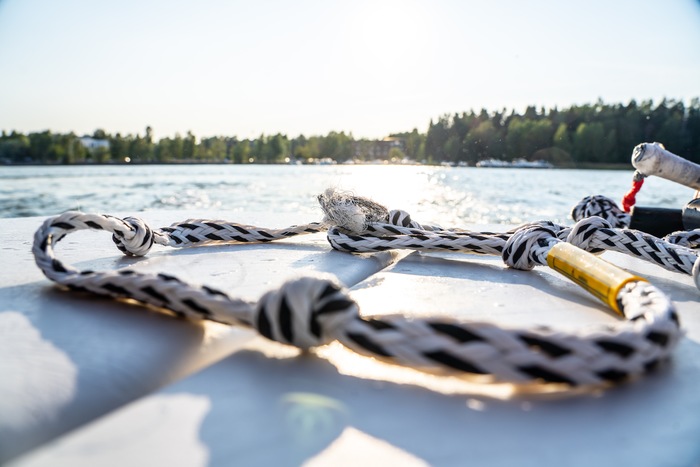5 Top Tips for Winterizing Your Boat and Wake Gear

It may be too cold outside for another wakeboarding session on your favorite lake—but by taking steps to winterize your ride, you can ensure many more on-the-water thrills to come once spring rolls around.
Wondering how? If you drive a jet boat and enjoy water sports, there are a few special ways you can prepare your vessel and gear for the cold months ahead. Read on to see our top five tips!
Change fuel
Many experts recommend filling up with fresh fuel while winterizing. Even though you won’t actually be using that fuel for a while, the idea is to reduce the amount of air in your tank so that there’s no room for condensation over winter. But don’t just add fuel. Treat it with a stabilizer, too, so that it does not go bad over the break.
Add antifreeze and fogging oil
Because you’re not working with an outboard engine, you will be able to skip the step of preparing your propellers for the season ahead. However, don’t forget to treat your engine with antifreeze, which will help to ward against the freezing of any water that creeps its way in after all has been drained, as well as fogging oil, which keeps your engine’s parts safe from corrosion and helps maintain lubrication.
Change oil and filter
Also, be sure to change your boat’s oil and add a fresh filter. This step will help rid your boat of any old oil contaminants, which would otherwise affect engine health during its downtime.
Clean up your space
These tips, as well as other winterizing must-dos, will help prepare the overall health and function of your Vortex on the inside. Once those are done, you can spend some time sprucing up the physical space of your vessel. Giving everything a freshwater rinse and wipe-down, especially after a particularly active season, can help your boat look and feel like new come the springtime. Remember to clean out storage compartments and remove small items and removeable pieces, like your bow filler cushion, so that they are not exposed to the elements (especially if your boat is being stored outdoors, in which case you will want to pick up a cover and boat shrink-wrap, too). Finally, if you have a folding arch tower, bring that down so that your boat can be more easily transported and covered up during the winterization process.
Take gear of wake gear
Once your boat is safely stored for the winter, be sure to care for your wake gear and PWC, too. A jet ski functions quite like a small boat, for example, so you will want to drain it, fill it with fuel, lubricate its engine and store it somewhere safe. For smaller standalone gear, such as your board, treat like you would between outings. Rinse everything off well, especially if it was exposed to salty or brackish water, and take note of any chips or binding tears so that you can address those during the off-season. Now might even be a good time to replace your tow rope if it’s showing signs of wear. Finally, dry your gear thoroughly and store it on a designated rack (in a dry, room-temperature space) so that it is out-of-the-way and harder to ding or bump into.
Remember that while these are some of the biggest steps in winterization, your service team can help address unique needs and how-tos for your specific model and situation.
We hope that these tips help give you peace of mind for the winter weather ahead! And just remember—you’ll be back to splashing, cruising and skimming the surface in no time at all.
Bookmark & Share
Previous Article
Next Article
